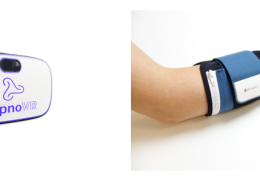When it comes to protecting ourselves from environmental allergens, most of us focus on our homes and workplaces—investing in air purifiers, deep cleaning routines, and allergy-friendly materials. Yet there’s one space we often overlook: our cars. For many people, especially those commuting daily or regularly travelling with children or pets, the car becomes a second home. And like any frequently used space, it can harbour a surprising number of allergens that may impact your health.
The Hidden Health Risks Inside Your Vehicle
Step into any car on a warm spring day and it’s easy to imagine what’s floating around unseen. Pollen from nearby trees and grasses can be drawn in through the air vents. Dust mites find a home in upholstery and carpets, while pet dander lingers long after the last journey to the dog park. Even mould spores can take hold in damp corners of the cabin, especially in wetter months. Over time, these allergens build up, potentially triggering symptoms like sneezing, itchy eyes, or even more serious respiratory reactions in sensitive individuals.
For people with seasonal allergies, the problem is compounded during spring and autumn. Simply opening the window for fresh air during a drive can flood the cabin with airborne irritants. And because most vehicles recirculate air through the same HVAC system, unclean filters and neglected vents can ensure those particles stay in rotation long after you’ve rolled the window back up.
How to Keep the Cabin Air Cleaner
Maintaining clean air inside your vehicle doesn’t require a complete overhaul, but it does take some intentional habits. Regularly replacing the cabin air filter—especially with a HEPA-grade option—can make a significant difference in trapping fine particles before they circulate. Professional interior detailing services often include deep-cleaning fabric surfaces, which can reduce the presence of dust, pollen, and even bacteria. For those especially prone to allergies, some drivers now opt for portable air purifiers or UV light sterilisation devices designed for use in vehicles.
Even small steps, like parking away from heavy vegetation during pollen season or using non-toxic, hypoallergenic cleaning products, can reduce allergen accumulation over time. It’s all about being proactive, particularly if you or your passengers are prone to seasonal sniffles.
Why the Car’s Exterior Also Matters
It might seem like the outside of your car has little to do with your respiratory health, but it plays a more important role than most people realise. Tree pollen, industrial fallout, and environmental grime don’t just look unpleasant when they coat your vehicle—they can damage the paintwork, and when cleaned off improperly, release particles that end up on your hands, clothes, or even inside the vehicle.
More drivers are recognising the link between easy maintenance and overall vehicle hygiene. In areas like Surrey, where suburban greenery meets dense urban environments, it’s not uncommon to see a build-up of pollen and pollutants on vehicles throughout the year. One increasingly popular solution is paint protection film. Though often associated with luxury cars and preserving showroom shine, services offering paint protection film in Surrey are seeing a broader clientele. Beyond aesthetics, this invisible layer helps prevent contaminants from bonding to the paint, making it easier to wash away pollen and other allergens without harsh scrubbing. For those aiming to reduce allergen exposure and simplify their car care routine, it’s becoming a smart long-term investment.
Building Better Driving Habits
Ultimately, reducing your exposure to allergens while driving is about building habits that support a healthier mobile environment. Simple choices, like keeping windows closed during high pollen counts, avoiding parking under trees in full bloom, and cleaning your hands after touching the car exterior, can all help minimise allergic reactions. Pairing these habits with regular cleaning and maintenance ensures that the air you breathe while driving is as clean and safe as possible.
Final Thoughts
Our vehicles may not be the first place we think of when it comes to health and wellness, but they’re a space we occupy every day. Whether you’re heading to work, dropping the kids off at school, or escaping for a weekend trip, the quality of your in-car environment matters. By taking small but consistent steps—both inside and out—you can reduce your exposure to environmental allergens and drive with a clearer mind and body. And for those in areas like Surrey, where nature and city life often intersect, solutions like paint protection film and regular car care are just part of a smarter, healthier driving routine.









